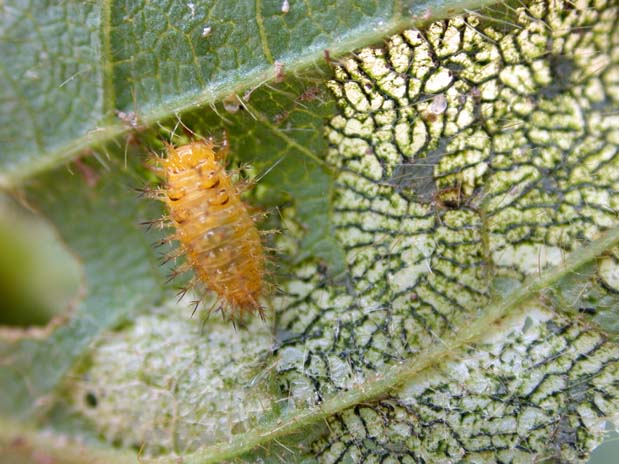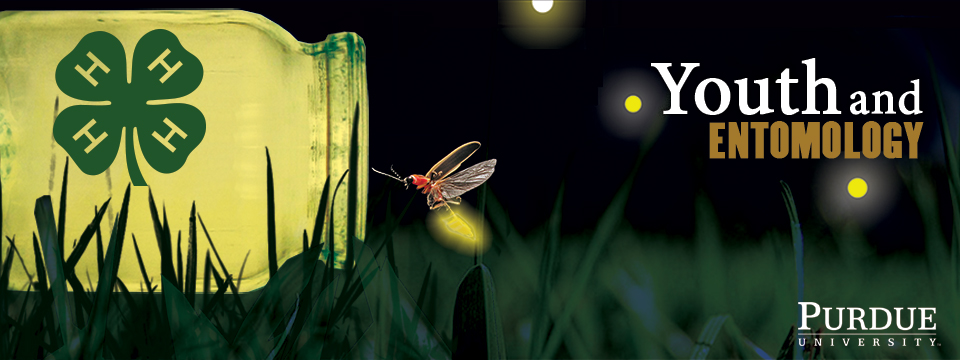

|
|
Mexican Bean Beetle larva
(John Obermeyer, Purdue University) |
|
Common Name: Mexican Bean Beetle - larva
See also: adult Scientific Name: Coccinellidae: Epilachna varivestis Status: pest of beans and peas Damaging Stage: larval and adult Biology: The copper-colored adults resemble large lady beetles. They are ¼ inch long with eight black spots on each wing. Mexican bean beetle larvae are quite unique in appearance. The entire body is covered with rows of stout-branched spines. When the larva is newly hatched, the entire body (including spines) is bright yellow, but as they mature, the spines become darker at the tips. Larvae also have a sucker-like apparatus at the hind end for attachment to feeding surfaces. Adults overwinter and emerge in midsummer. After feeding, the females lay their eggs on the underside of foliage. They hatch within a week during warm weather. The larvae feed for two to five weeks before pupating. When pupating, a larva fastens the tip of its abdomen to a part of the plant and sheds its larval skin. The pupal stage lasts for a week before the adult emerges. There are two to three generations per year. Injury: The Mexican bean beetle is one of the only harmful members of the lady beetle family. Adults and larvae feed on the leaves of all kinds of beans (snap, lima, pole, kidney, pinto, navy, and bush). Mexican bean beetle leaf damage gives the leaves a skeletonized appearance. Pods and stems can be attacked also. Action Threshold: If a large number of insects overwinter, seedling damage may occur early in the year. Otherwise, action thresholds are not usually reached before August. Generally, if 30–35 percent defoliation is observed prior to full bloom, rescue treatments will be necessary. Management: Cultural, biological, and chemical control options are all successful in suppressing beetle populations. |
 |
||||||||||||||||
|
|
|||||||||||||||
|
Purdue Extension Entomology, 901 West State Street, West Lafayette, IN 47907 USA, (765) 494-4554 Department of Entomology | College of Agriculture | Extension © Purdue University | An equal access/equal opportunity university | Integrity Statement | Copyright Complaints | Maintained by ENTM IT Trouble with this page? Disability-related accessibility issue? Please contact us at entmwebmaster@purdue.edu so we can help. | ||||||||||||||||
